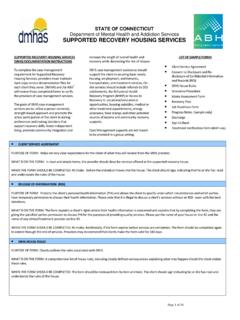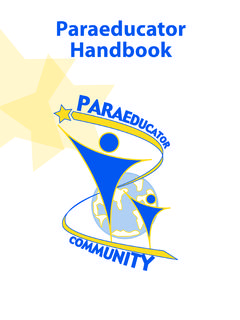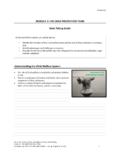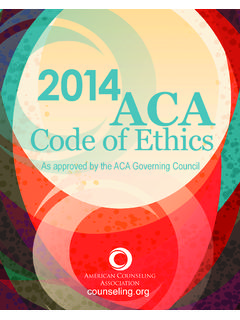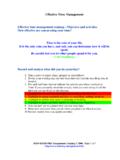Transcription of ACADEMIC INTERNSHIP IN NURSING EDUCATION NUR 866 …
1 1 ACADEMIC INTERNSHIP IN NURSING EDUCATION NUR 866 Sections 732 and 733 Lecture/Recitation/Discussion Hours: 1 INTERNSHIP Hours: 2 (6 weekly contact hours) 3 Credits On line Course Spring 2013 Catalog Course Description: Guided field INTERNSHIP within an ACADEMIC or health care setting. Synthesis and application of concepts to facilitate development of the advanced practice nurse as scholar, teacher, and collaborator. Course Objectives: At the end of this course, students will: 1. Integrate the nurse educator role in the planning, development, design, and assessment of student learning within the ACADEMIC and clinical environments. 2. Utilize a variety of theoretical and empirically based strategies to develop, implement and evaluate a teaching plan designed for a diverse group of learners.
2 3. Integration and evaluation of technology and information literacy skills within NURSING EDUCATION . 4. Apply teaching strategies that foster a positive ACADEMIC climate and facilitates student learning. 5. Evaluate teaching effectiveness through peer, preceptor, faculty and self-evaluation processes. 6. Assume a leadership role in the development, design, delivery, and evaluation of an innovative evidence-based teaching/learning methodology to inform practice. 7. Development of a philosophy of teaching statement and professional portfolio. Prerequisites: NUR 861 Co-requisites: None Professional Standards & Guidelines: The curriculum is guided by the following documents: 1.
3 American Association of Colleges of NURSING . (2008). The essentials of master s EDUCATION for advanced Practice. Washington, DC: Author. 2. American NURSING Association. (2010). Code of ethics for nurses with interpretive statements. Silver Spring, MA: 3. American Nurses Association (2010). NURSING s social policy statement: The essence of the profession (3rd ed.). Washington, DC: Author. 5. National League for NURSING . (2012). The scope of practice for ACADEMIC nurse educators. New York: Author. 6. American Nurses Association (2010). NURSING : Scope and standards of practice (2nd ed.). Washington, DC: Author. 2 Course Coordinator and Clinical Faculty: Kathleen Poindexter, PhD, RN, CNE Contact Information: 517-355-8321 Office: A-109 Life Sciences Office Hours: Call or e-mail to arrange Note: Times can be arranged to accommodate student schedules.
4 Faculty Contact: Faculty are available via email or by phone throughout the week by appointment. Please use the email located within the course ANGEL program to contact the appropriate faculty member. Email ought to be addressed to the appropriate faculty only and not to the entire class in an effort to reduce overall course emails and inappropriate messaging. Every effort will be made to return your email or call as soon as possible generally within 48 hours during regular week days. Note: During the weekends and holidays faculty members may not be available or on-line. We encourage questions however students must realize the faculty may not be on-line at all times.
5 Instruction: a. Methodology: NUR 866 is an asynchronous online course that requires a student to log into the class several times per week to read email, announcements, discussions and to complete the course assignments. The 1 credit didactic component of the course will incorporate weekly assignments utilizing a variety of teaching and learning strategies such as weekly reading assignments, lesson activities, case studies, and discussion forums. A 2 credit (90 hour) ACADEMIC INTERNSHIP within an approved ACADEMIC setting and clinical agency under the direct guidance of a qualified ACADEMIC preceptor is required. Additional written requirements related to the INTERNSHIP experience will include reflective journals, test analysis, self evalation, portfolio, and teaching project.
6 Students must pass both the didiactic and clinical components of the course to be awarded course credit. b. Didactic weekly Lessons: Individual lessons will be available to the class at 8:00 am on Tuesday morning of each week and remain accessible for the duration of the course. weekly lessons may include a variety of dicussion forums, case studies, or quizzes which will be due at midnight on Tueday unless otherwise noted. Assignment due dates will be listed on the course calendar located in angel and on the corresponding assignment drop boxes. All assignments must be posted or submitted in the appropriate discussion board or drop box no later than midnight on the assigned due date.
7 Late assignments or postings may not be accepted or evaluated for grading purposes unless prior arrangements have been agreed upon with the appropriate clinical or course faculty. c. Clinical INTERNSHIP : (Must demonstrate completion of 90 hours and receive a satisfactory evaluation to pass the course). Students are required to participate in a minimum of 90 hours for their clinical INTERNSHIP experience. An individual course calendar, personal INTERNSHIP objectives, and evaluation strategies must be submitted to the assigned clinical faculty by the date noted on the calendar. Faculty will contact the student s preceptor throughout the semester in order to evaluate student progress towards accomplishing personal and course objectives.
8 Documentation of clinical INTERNSHIP hours achievement of National League for NURSING nurse educator competencies and personal clinical competencies will be documented in an electronic tracking system: E*Value. All entries will be validated by clinical preceptors on a biweekly basis. 3 Required Texts: American Psychological Association. (2009). Publication manual of the American Psychological Association (6th ed.). Washington, DC: Author. ISBN-10: 1433805618 Ard, N. & Valiga, T. (Eds). (2009). Clinical NURSING EDUCATION : Current Reflections. New York: National League for NURSING . ISBN-10: 1934758076 Mastrian, G., McGonigle, D., Mahan, W. & Bixler.
9 (2011). Integrating technology in NURSING EDUCATION : Tools for the knowledge era. Sudbury, MA: Jones and Bartlett Publishers. ISBN: 978-0-7637-6871-3 National League for NURSING . (2012). The scope of practice for ACADEMIC nurse educators. New York: Author. (Need to order from NLN) Oermann, M. H., & Gaberson, K. B. (2009). Evaluation and testing in NURSING EDUCATION (3rd ed.). New York: Springer. ISBN-10: 0826110614 Mastrian, G., McGonigle, D., Mahan, W. & Bixler. (2011). Integrating technology in NURSING EDUCATION : Tools for the knowledge era. Sudbury, MA: Jones and Bartlett Publishers. ISBN: 978-0-7637-6871-3 [Library information] American Nurses Association Electronic Books (E-books) *American Nurses Association (2010).
10 Guide to the Code of Ethics for Nurses: Interpretation and Application< >. Silver Spring, MD *American Nurses Association (2010). NURSING Scope and Standards of Practice< > (2nd ed.). Silver Spring, MD *American Nurses Association (2010). NURSING 's Social Policy Statement: The Essence of the Profession< > (3rd ed.). Silver Spring, MD (*Note to Students: Access these e-books through the MSU Libraries Catalog or the NURSING E-book page: These e-books allow unlimited concurrent users.) Additional readings will be available within the course lesson folders. Recommended Texts: Billings, D. M., & Halstead, J. A. (Eds.). (2012). Teaching in NURSING : A guide for faculty (4th ed.)



